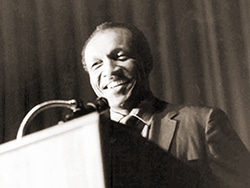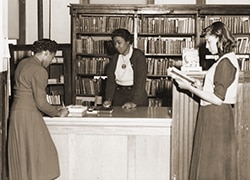Welcome to the Archives
The Archives of the Episcopal Church welcomes you to explore the multi-faceted history of The Episcopal Church through curated online exhibits, digital archives, governance documents, and audiovisual galleries. Established by General Convention in 1835, The Archives of the Episcopal Church is the oldest denominational archives in the United States and serves as the official repository for the Domestic and Foreign Missionary Society of the Protestant Episcopal Church in the United States of America and the General Convention and its governing bodies.
Recognizing its foundations in Colonial America, The Archives of the Episcopal Church has become a leading archive of religious history, documenting the diverse missions and ministries of The Episcopal Church and its influence on social, religious, and political events worldwide. The repository holds over 5,000 discrete collections, comprising over 15,000 cubic feet of archival material, and covers over 250 years of Episcopal history.




